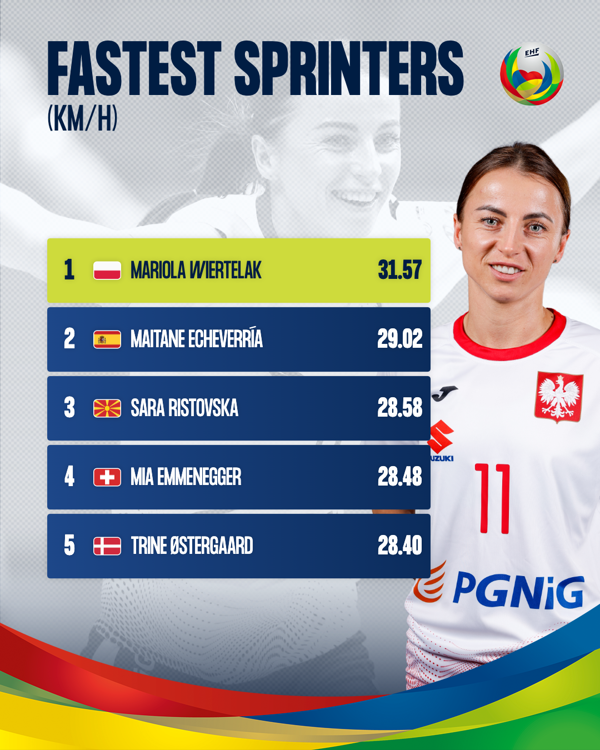After 28 matches – the preliminary round and the first four main round games – two Slovenian players are on the top two places of the fastest shots that were goals: Ana Gros leads the standings with a 114.81-km/h effort ahead of teammate Alja Varagic with 114.45.
In total, eight goals have been scored from shots over 114 km/h, with Croatia’s Kristina Prkacin, Romania’s Cristina Neagu, Norway’s Nora Mørk, Hungary’s Csenge Kucsora, and Slovenia’s Elizabeth Omoregie and Tjasa Stanko all hitting that speed.
With all the first 10 players playing in the backcourt, the theory that backs have the most powerful shots in handball still holds true at the EHF EURO 2022. In total, over 120 goals of the 1,441 scored so far have been clocked at over 100 km/h.
The iBall’s chip also tracks the number of passes made by the players at the EHF EURO 2022, with three centre backs holding the top three places, underlining their importance for their teams in the competition.
Germany’s Alina Grijseels, who is also the top scorer of the competition with 29 goals, has made the largest number of passes: 842. Next is Romania’s Eliza Buceschi with 781 passes and North Macedonia’s Monica Janeska with 727 passes, tied for the third place with Croatia centre back Valentina Blazevic. Janeska is the only player to have played only three matches in the competition.

But what about the largest number of kilometres covered in the competition?
For the whole tournament, two of Denmark’s wings, Trine Østergaard (18.98 km) and Emma Friis (17.07 km) are topping the charts, with Germany’s Johanna Stockschläder coming third, with 16.67 km ran throughout the tournament.
The record for a single game is held by Dutch left wing Bo van Wetering, who covered 5.67 kilometres in the loss against Germany, followed by Mia Emmenegger, who had 5.36 kilometres, 5.32 kilometres and 5.28 kilometres respectively in Switzerland’s three matches of the preliminary round.
Norway’s back Henny Reistad holds three of the top six maximum airtime spent during a jump in the competition, including the best one, with 0.89 seconds, as Romania’s Diana Lixandroiu is a close second, with 0.88 seconds spent in the air.
One of the most interesting data points at the Women’s EHF EURO 2022 is the maximum speed reached by a player in the competition. Surely this category must be dominated by wings – and that holds true, with Poland’s Mariola Wiertelak holding the record with a 31.57 km/h sprint, followed by Spain’s Maitane Echeverria with 29.02 and North Macedonia’s Sara Ristovska with 28.58.









